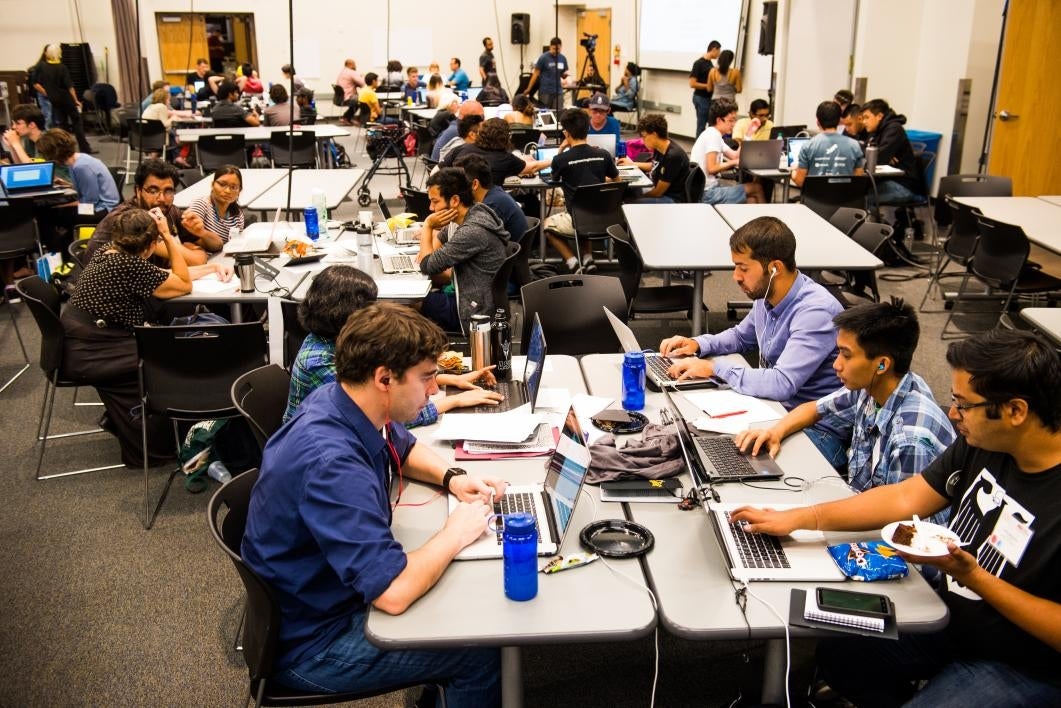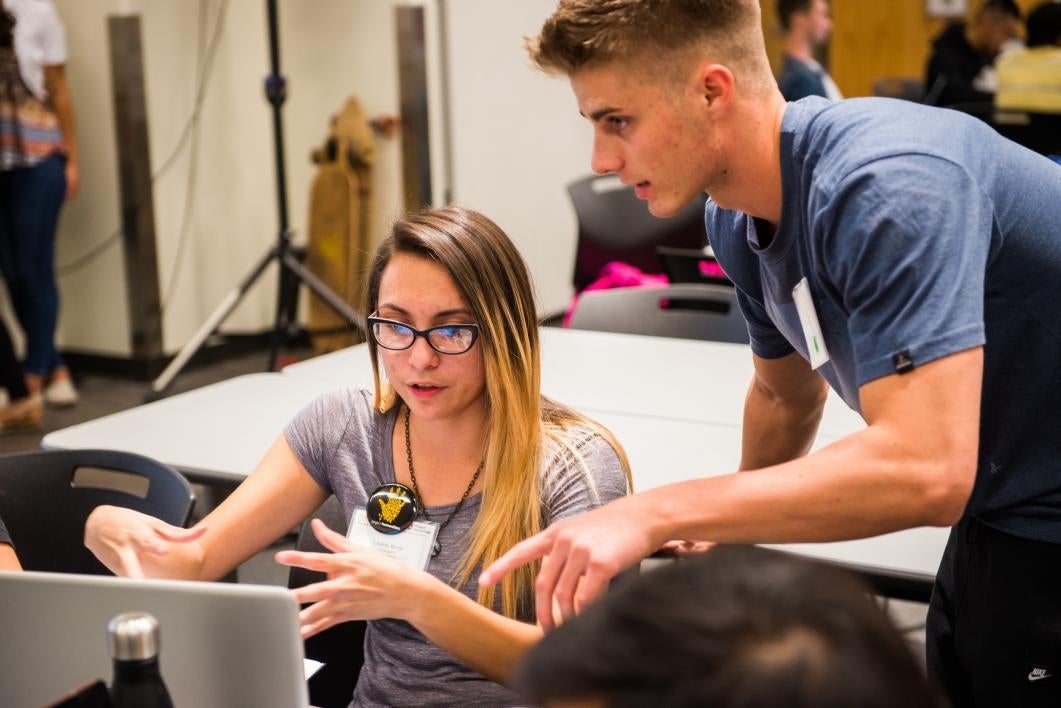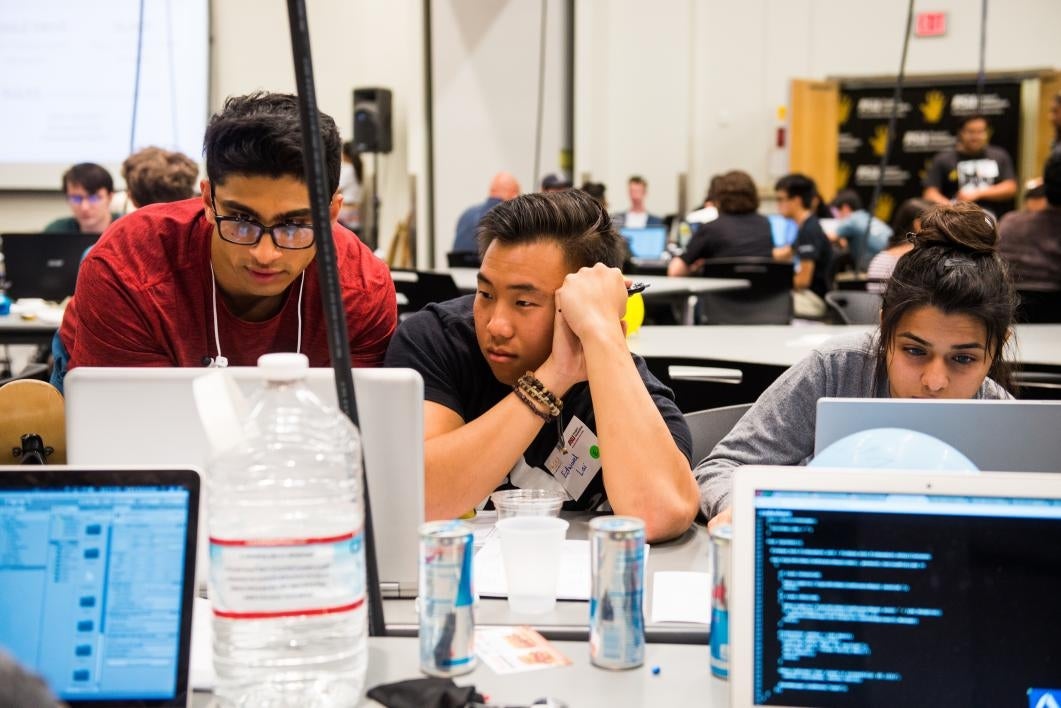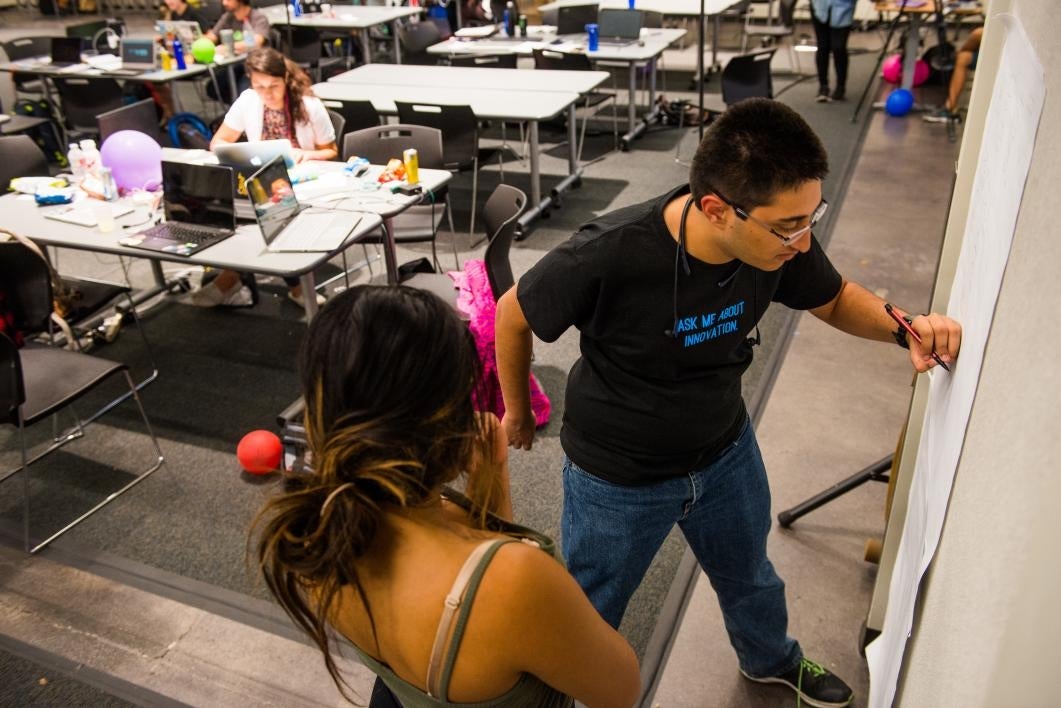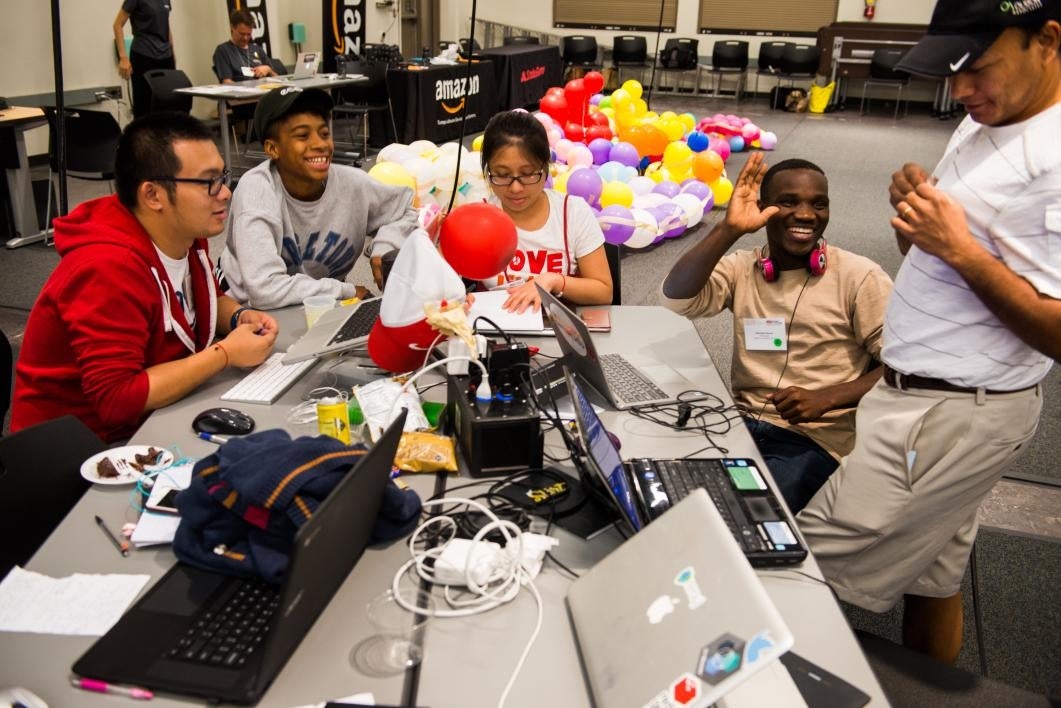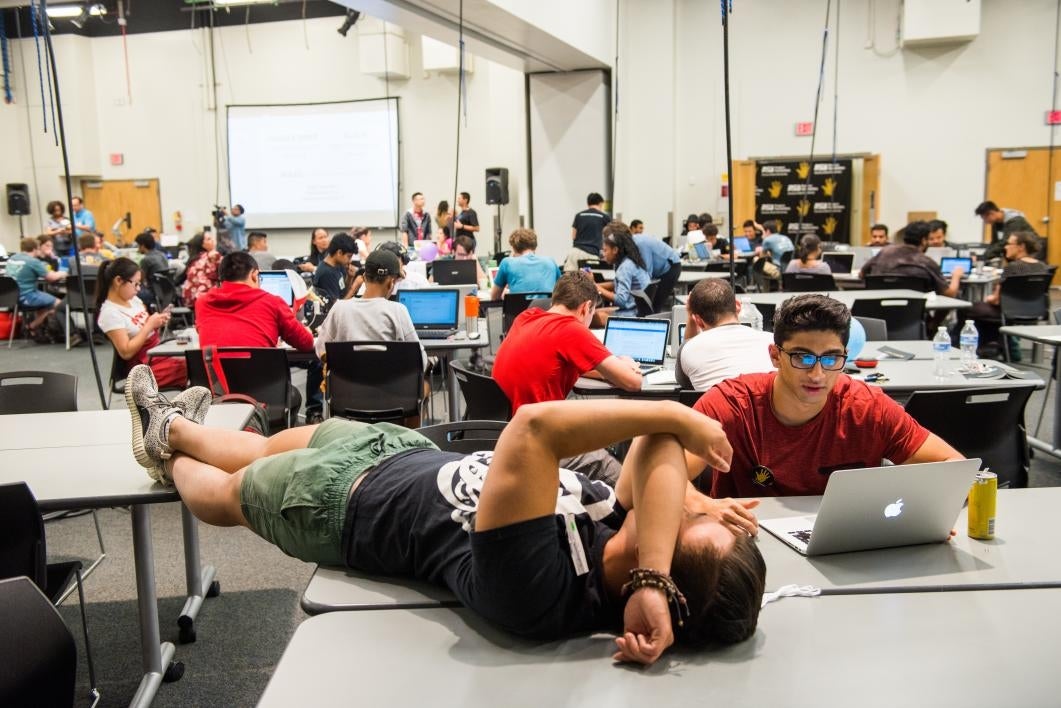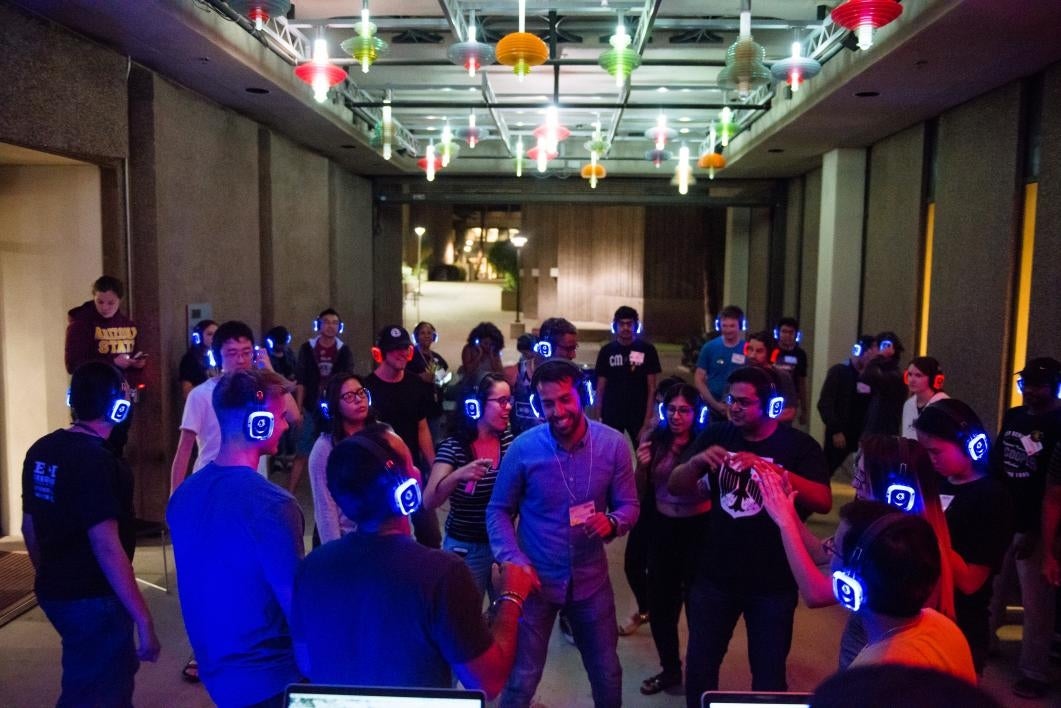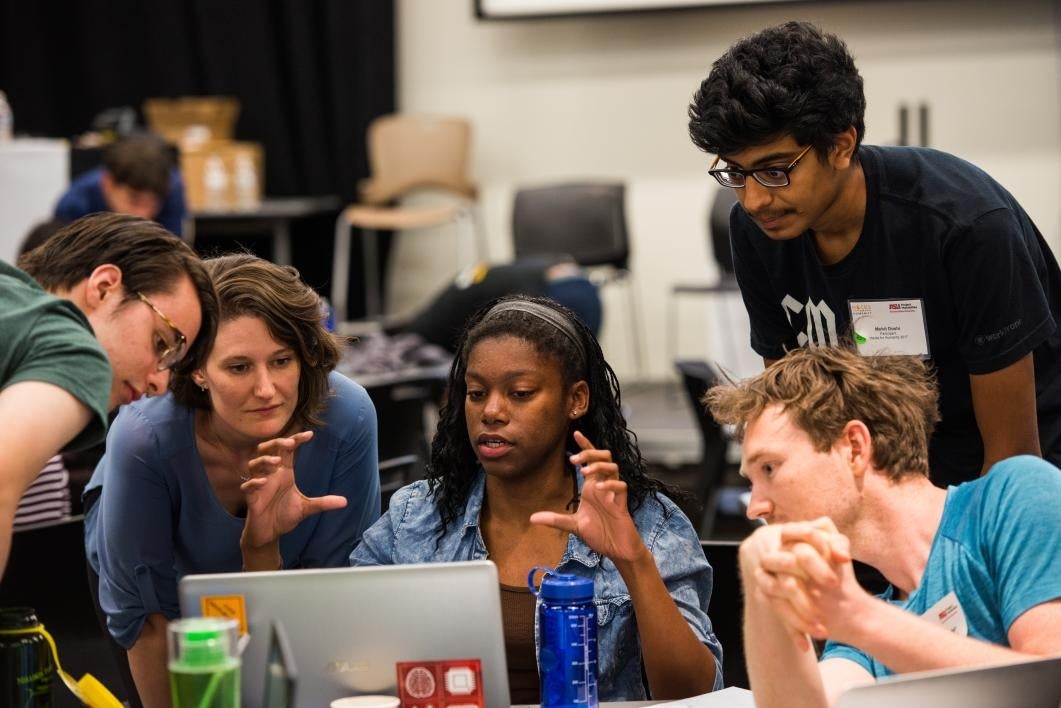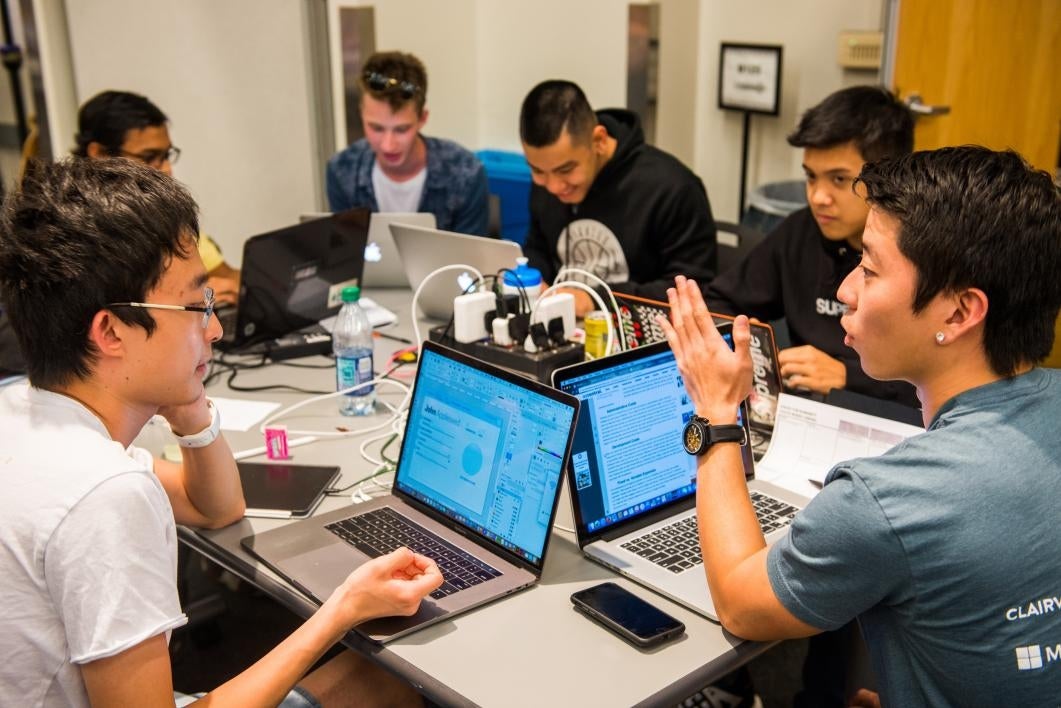When people think of hackers, a picture of someone slumped over a computer in a dimly-lit room often comes to mind; but who knew hacking skills could be used for good?
A 36-hour hackathon at Arizona State University, Hacks for Humanity, encouraged participants to do just that. Oct 7–8, teams of hackers from all over the world gathered together, utilizing their technology and teamwork skills to create apps and websites to better the community.
“After talking with people that have been to other hackathons, they say ‘most people come with an idea, they come with a team pre-built, and they’re just there to compete,’” said Anie Miles, a faculty associate for the Graphic Information Technology program at ASU. “Here, part of the process is building the team, and those are some of the skills you take away from it.”
By including participants from theater to business backgrounds, the Project Humanities-sponsored event shattered the myth that hacking is exclusively for coding and developing experts. Teams needed to not only develop a technology from scratch, but present it in a creative and innovative way, requiring the insight of all participants.
From an app to help users track volunteer hours to a website that encourages mentoring and companionship with people with special needs, the hackers' ideas were creative and varied. Ultimately, a team that created a volunteer matching app called "Envolve" took home first place.
Top photo: Particpants work on their ideas during ASU's Hacks for Humanity event Oct. 7–8.
More Science and technology

ASU and Deca Technologies selected to lead $100M SHIELD USA project to strengthen U.S. semiconductor packaging capabilities
The National Institute of Standards and Technology — part of the U.S. Department of Commerce — announced today that it plans to award as much as $100 million to Arizona State University and Deca…

From food crops to cancer clinics: Lessons in extermination resistance
Just as crop-devouring insects evolve to resist pesticides, cancer cells can increase their lethality by developing resistance to treatment. In fact, most deaths from cancer are caused by the…

ASU professor wins NIH Director’s New Innovator Award for research linking gene function to brain structure
Life experiences alter us in many ways, including how we act and our mental and physical health. What we go through can even change how our genes work, how the instructions coded into our DNA are…


